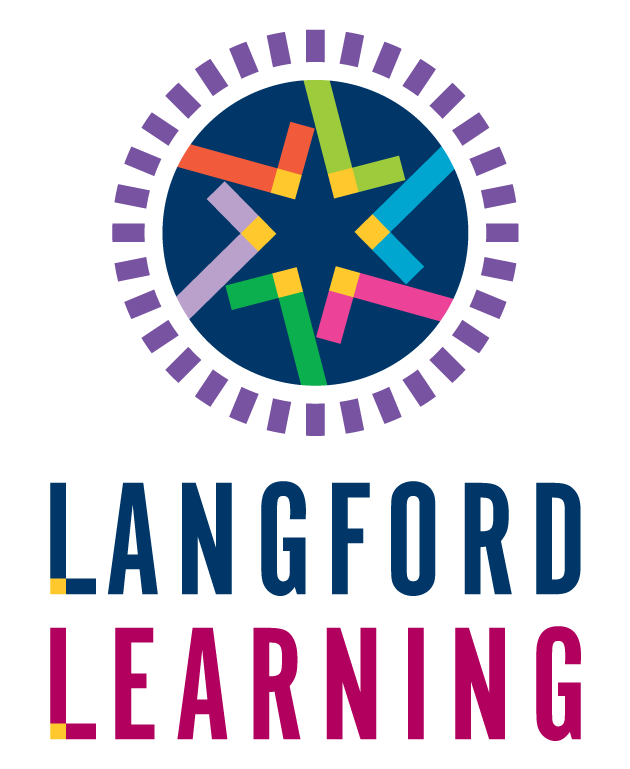The Taguchi Loss Function: Deming in Education with David P. Langford (Part 9)
- David Langford
- Education, Podcast
- 0 Comments

This podcast was originally published on In Their Own Words for The W. Edwards Deming Institute
What is the Taguchi Loss Function and how does it apply to education? In this episode, Andrew and David talk about statistician Genichi Taguchi’s idea that the further you move from a measurable quality target, the more quality is lost, even if the item still “meets specifications.” David shows how you can apply this to education.
(For more about the Tachugi Loss Function, visit Wikipedia or Christopher Chapman’s Digestible Deming blog post.)

TRANSCRIPTION:
Stotz: My name is Andrew Stotz, and I’ll be your host as we continue our journey into the teachings of Dr. W Edwards Deming. Today, I’m continuing my discussion with David P. Langford, who has devoted his life to applying Dr. Deming’s philosophy to education, and he offers us his practical advice for implementation. Today’s topic is, Taguchi loss function. David, take it away.
Langford: Thank you, Andrew. And I liked how your eyes got really big when you said Taguchi loss function. Oh my gosh, it sounds frightening, doesn’t it?
Stotz: It does. It’s a little bit overwhelming, it’s exciting. I’m interested to learn.
Langford: And in education, it’s probably less known than it is in business. Usually when I’m working with a group of business leaders and I mention that I can get pretty strong – two-thirds of the audience probably knows something about the Taguchi loss function. I was at a conference with a whole roomful of school superintendents and I asked them, Anybody know what the Taguchi loss function was? And not a single hand went up. So less well known, but just as applicable. So in one of the earlier podcasts, we were talking about the concept of optimization of the system. And I just wanna refresh our memories and the memory of our listeners that it’s really based on Deming’s System of Profound Knowledge as well. So the four parts that Deming had was, Appreciation for a System, Understanding Variation, and especially statistical variation, Psychology and Knowledge of Theory. And I always add neuroscience to that mix as part of profound knowledge, because it’s really critical to understand, especially in education, how the brain actually processes information.
Langford: So when we’re talking about the optimization of a system, we’re actually talking about all of those factors being optimized, especially in a classroom or a school. So you can’t just sort of optimize one thing, for instance. So over the last 30 years, I’ve known principals that are just really, really good managers, excellent at running the building. They never do anything out of the ordinary, everything is always perfect. The trash cans are always where they’re supposed to be. They’re just really good managers. They’re the kind of people that if you’re gonna take a school trip and they have to organize something complex, that’s the kind of people you want. But if you’re gonna do something really super innovative, change the system in some way, do something that’s never been done before, that’s not the kind of person that you want.
Stotz: Right, it’s interesting that you just mentioned that optimizing so many different factors, that’s part of the reason why people don’t do it because it is complex. David, I just pulled up Wikipedia and I thought maybe it would be interesting if we see what Wikipedia says about what is the Taguchi loss function. Would you like me to read a little bit of that?
Langford: Yeah, so, go ahead.
Stotz: According to Wikipedia, the Taguchi loss function is graphical depiction of loss developed by the Japanese business statistician, Genuichi Taguchi to describe a phenomenon affecting the value of products produced by a company. Praised by Dr. W Edwards Deming. It made clear the concept, of the quality does not suddenly plummet when, for instance, a machinist exceeds a rigid blueprint tolerance. Instead, loss in value progressively increases as variation increases from the intended condition. This was considered a breakthrough in describing quality and help fuel the continuous improvement movement.
Langford: So now that we’ve lost about 80% of our audience…
Stotz: Oops, sorry about that.
Langford: No, that’s… It’s actually correct, and Taguchi was actually a contemporary of Deming, and Deming always referred to Taguchi as having one of the best, the greatest breakthroughs in systems. I really wanna focus on in education and applying this kind of thinking to education and what would that mean? So I think we looked at a Taguchi loss function diagram and if you could pull that up on the screen?
Stotz: Yeah, let me pull that up for the video viewers and I’ll walk you through and we’ll walk you through for the audio listeners.
Langford: And then we’ll put a link in the show notes for that.
Stotz: Yep.
Langford: If you wanna contact it later. So basically you have to start to think about… And then, in the diagram right in the very middle of the diagram, is the target or what Deming would talk about as a system that’s perfectly optimized. And in that, there’s not losses on either side. And basically, without getting in into too much statistics or math or anything like that, the further you move away from that optimum state, the greater the loss. So, I wanna talk…
Stotz: And maybe for the listeners, I’ll just describe it. We’re looking at a parabola. So we have… On the Y axis, we have the level of loss. In other words, if it goes down on the Y axis, the loss is going down. And on the X axis we have the value of the characteristics, meaning we wanna hit some target and the parabola is going up if you go too far away. So loss is rising if you go too far to the right or loss is rising if you go too far to the left. So, in fact, that’s kind of interesting. Both if you’re off target either way, it’s still gonna bring you loss.
Langford: So let me give you a very practical education example. My good friend, Dr. Doug Stilwell in Iowa, when he was a school superintendent, his problem was that, parents were complaining when… The time that they would get called when there was a snow day or a school cancellation during the winter. And so these complaints just had gone on year after year, after year for 20 years. And so finally, when I taught him about the Taguchi loss function, he did a little study with parents to find out the optimum time to be called. And so sent out surveys and said, “What would be the optimum time?” And if I recall, it ended up the perfect time was like 6:20 in the morning. So the further, the earlier you did it as you move towards say 6 o’clock or even earlier, if you went all the way to 5:30, then the losses became huge. There’s these tons and tons of people did not like that. And on the other side, if 6:20 was the optimum, the closer and closer that you move towards 7 o’clock, there’s already people going to work and making other plans and not being informed, etcetera.
Langford: And so the losses are mounting on that side as well. And so he ended up implementing a system that in explaining parents always even new parents coming into the system that, “You will receive a notification by 6:20 every morning whether or not there’s gonna be a school closure.” And guess what? Complaints virtually disappeared completely. So I think it’s a really good example about you can optimize… Even sometimes people say, “Oh well, that’s not a big deal, and I’ll just put up with the complaints.” But why would you wanna do that? Why would you wanna have parents calling board members and calling the school and complaining about this and that. And it goes back to really making people happy within the system, but you’re not just making them happy just for happy’s sake, you’re making them happy because you’re doing a really good job of managing with the input of the people in the system because they’re the most knowledgeable about the systems.
Langford: So, so many managers will make a decision like that, it could be based on what’s best for the front office. It could be that the decision is what’s best for me as a manager. I don’t like to get up before 6 o’clock in the morning and check the weather and have that to be the first thing I do during the day. And so I’m gonna do it at this time, but have no systems knowledge. They haven’t taken the time to actually solve the problem or understand even what the problem is. And that is where I think Taguchi loss function really comes in. Same kind of an example I wanna share would be like in a classroom, if you’re talking about the speed at which you’re moving through material that you’re teaching kids as they’re learning about stuff, well, you go too fast, the losses are gonna be students who can’t keep up, don’t understand, get frustrated and get mad, etcetera. That’s on one side.
Langford: And on the other side, you go too slow, you have all the students that really do grasp things quickly and wanna move forward. So understanding that optimum zone, and often times in neuroscience, scientists will sometimes call it the learning zone. That there’s a zone or speed that you can go in, but there’s another way to optimize learning within the classroom too. And that is, as a teacher to stop managing the pace yourself and let each student learn to manage their own pace. And so now each student is starting to optimize learning based on their pace. Well, the reason we don’t do that is if I’ve got 30 kids in the class and I got 30 kids at different paces, that’s a lot more work for me as the teacher, right. Rather than me setting the pace and forcing everybody to work within that. So I would have to learn to manage the system much differently if I’m gonna optimize learning for every child within a classroom or think about a whole school that’s optimized like that. Lots of teachers trained and in how to manage like that.
Stotz: Yeah, I was thinking about… I love some of the quotes from Thomas Sowell in America. And he’s a wise man and he says, “There’s no solutions, only trade-offs.” And in a way, I feel like the Taguchi loss function is really kind of the Taguchi trade-off function with loss on both sides.
Whereas a lot of times we think about, there’s a specification and that’s what we’re aiming for. And that’s what is really interesting about the Taguchi loss function is that it makes you aware that either way you go, you’re gonna have a trade-off. Let’s say you could speed up a production process in a factory, but it will impact other processes or that type of thing. So everything is a trade-off.
Langford: Yeah, and it’s exactly the same concept, the same thing in a classroom or a learning system as well so…
Stotz: And one other question about that is, you mentioned about optimizing in this case for the parents. Now, you could see that some people… Some teachers in a school might say, “I don’t really care about the parents. I wanna optimize for my convenience and I leave for school at 6:00 AM, and I wanna know at 6:00 AM if we’re gonna be closed or not, so I don’t have to go in.” So how does that work? Like you’ve gotta decide. Also, you talked about optimizing, you could optimize for each individual student versus optimizing for the group of students as a whole. How does someone figure that out when they’re in that system?
Langford: Yeah, so that comes back to the constancy of purpose. And that was Deming’s number one point out of his 14 points is, “Do you have a constancy of purpose?” And so like for a school, if the constancy of purpose is so that you always have a place to park your car and… You always get out of the building by 4 o’clock in the afternoon, and whether that’s individually or written or unwritten within the whole school, you are implementing a constancy of purpose. But if your constancy of purpose is to continually create learning experiences for youth in its day, in order to add value to society, that’s a much different purpose. And that means everybody has to be focused on creating those learning experiences and looking at students as if they were in a company. You’d say they would be the customers, but they’re the clients or they are the people receiving the service. And the schools that really get it, understand that that’s why they exist. They exist only for student learning and no other purpose, and so everything becomes optimized around that purpose.
Stotz: Great. So, maybe I’ll just summarize some of the things that I took away from that. I think the first thing is, I kind of see now Taguchi loss function as it’s kind of a trade-off, and we can see that the objective is to identify what are you trying to optimize for, and then understanding that deviating away from that on either side will bring loss, and ultimately what you wanna try to do is find the optimum point where that line, that parabola is having the least loss in relation to what is your constancy of purpose. What is the purpose of what you’re doing? Anything else you would add to that?
Langford: No, that’s exactly right. And I’m sure that there are parents that are listening and they say, “Well, you know, my child’s gifted in school and they really like to move fast, and if you sort of optimize the pace, my child is gonna start to be bored.” But then there’s other ways to think about that, that if you finish everything very quickly, you have a lot of options now, right? You could help somebody else and is somebody gonna bully you if you’ve been helping them on a daily basis, understand a concept or work through something. You could go ahead at your own speed, you could go faster if you wanna go on, or maybe you’re not as good in another subject, and you need to spend that time optimizing the performance in Math or English or something else that you’re not as good in. And so I used to always teach students that your job is to optimize your own system, right? And my job is to operate the system… Optimize this system and the superintendent and so on and so forth, all the way up to the whole nation optimizing performance.
Stotz: I wanna just tell a quick story before we wrap up, and that is, I was teaching a finance course and I knew that my students did not understand finance and they were kind of terrified, and so what I had was… I would teach a little bit and then I would give them a practice problem, then I would teach a little bit more and I’d give a little practice problem. And what I did… Here’s what I did and tell me what you think of it. So what I did is I basically told the students, I said, “Stand up when you’ve calculated the answer.” So what happened was, after I did the first couple of questions, but first of all, I like to keep students moving just because I feel like make it a little bit more exciting.
So, the students would stand up and you could clearly see that there was a group that would stand up first.
Stotz: So what I then did, is I said, okay, now after assessing this a couple of times, I was able to see that there was five students in the class that were just not getting up really fast. I said, “Okay, now five students come down.” It was a big class, it was at a university, and I said, “Okay, you five students come down to the front of the classroom and line up.” So they lined up in a line, and then I told the other students, come down and get behind one of these students until we have, let’s say, six people in each line. And so the students all came down and they got in line with the one that they know or whatever. And then once they were done, I said, “That’s your groups.” So the next time that I got, I did the next problem, I had to move around each other, the next time I had the problem, I said, “Okay, solve this problem, whatever team, where every member of the team has finished and you gotta make sure everybody’s finished, that team stands up first.” And then I tried to use the power of the knowledge of the senior people, or not senior, but the ones that really got it quickly to help the others, and they were helping the others just like what you said.
Langford: Yeah, so what you did is it’s the System of Profound Knowledge again, but from a neuroscience standpoint, yes, you’re right. Students of any age have to be up and moving, we need that spinal fluid moving up and down their spine and moving back and forth in order to get blood flow going to the brain and everything, so that part’s really good. What I probably would have adjusted would, I would have said, “Okay, as soon as you understand this, I want you to stand up and find somebody still sitting down and go explain it to that person and go over it until they understand it, and then now there’s two of you that are gonna stand up and you’re gonna find somebody else still sitting down. And so you sort of exponentially start everybody in the room, and then the noise level goes up, and the fun level goes up, and then everybody is actually looking for somebody still sitting. And sometimes…
Stotz: And would you do that every time, every time? Let’s say you have 20 quiz… Twenty test questions that you’re giving them throughout a three-hour time period, let’s say. Would you do that each time where you would just say, “Go help whoever’s sitting down,” or would you eventually allow them to get into groups or not?
Langford: They’re gonna get faster and faster and faster. Again, it comes back to your constancy of
purpose. Do you have a constancy of purpose or a meaning about why you want them to get into groups? Are they struggling with group, being able to be in a group and communicate in a group and those kinds… Okay, if that’s my purpose that’s much different.
Stotz: Which it’s not, because one of the unique things about Thais, when I teach them in Thailand is that they’re much more comfortable in groups compared to let’s say Americans, so they don’t need group work. But I also see that what you’re telling me, that method will accelerate, the process won’t take as long, I think it would accelerate pretty quickly. So alright, well, I would say I learned something from today’s lesson and I’m gonna test it out because my purpose for that class, I had 50 people in the class, many of them were very scared of finance, and I said, “I’m gonna get all of you to the level of competence that I want, that’s my goal.” It is… That was my goal in that class, and so that’s part of why I did it that way.
Langford: When you’re optimizing it, what you’re saying is correct, you’re optimizing, ’cause you want every single person to really enjoy… And I have a joy in learning for finance, right?
Stotz: Yeah.
Langford: So how am I gonna get there? What’s the quickest way I’m gonna get there? How I’m gonna optimize that?
Stotz: Fantastic. Well, David, on behalf of everyone at Deming Institute, I wanna thank you again for our discussion. And for listeners, remember to go to deming.org to continue your journey.
Stotz: This is your host Andrew Stotz, and I’ll leave you with one of my favorite quotes from Dr. Deming, “People are entitled to joy in work.”









